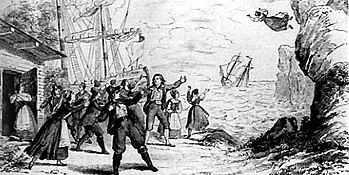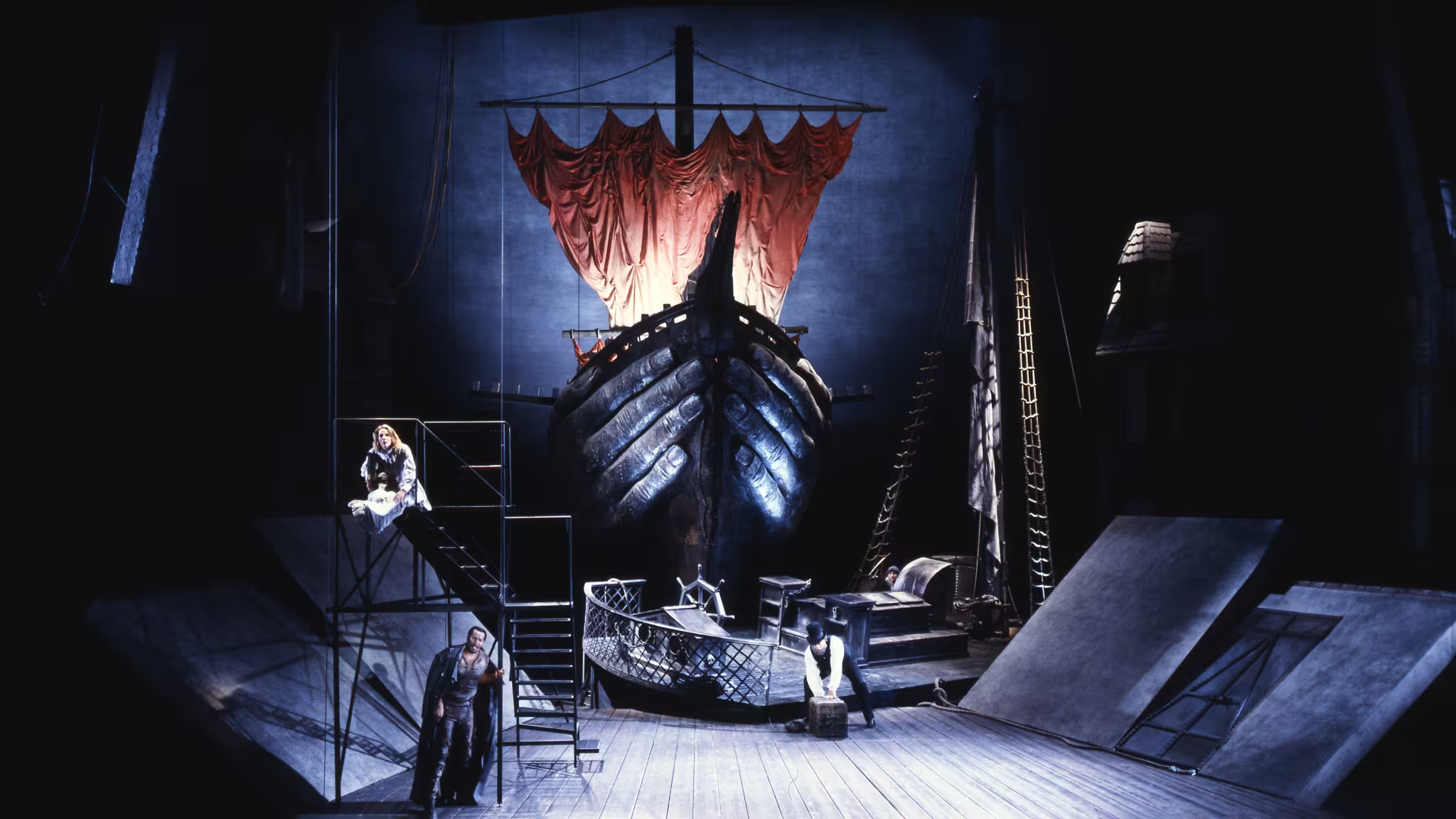DER FLIEGENDE HOLLÄNDER (Wagner) Bayreuth 1985
In this video
VIEW THE FULL VIDEO PERFORMANCE ON STAGE+ (subscription required)
DER FLIEGENDE HOLLÄNDER by Richard Wagner
Festspielhaus, Bayreuth, Germany
1985
CAST
Simon Estes – Holländer
Lisbeth Balslev – Senta
Graham Clark – Steurmann
Matti Salminen Daland
Anny Schlemm – Mary
Robert Schunk – Erik
___________________________________________________
Conductor: Woldemar Nelsson
Orchester der Bayreuther Festspiele
Chor und Sonderchor der Bayreuther Festspiele
Chorus Master: Norbert Balatsch
Stage Director: Harry Kupfer
Stage Designer: Peter Sykora
Costume Designer: Reinhard Heinrich
====================================================
Der fliegende Holländer (The Flying Dutchman), WWV 63, is a German-language opera, with libretto and music by Richard Wagner. The central theme is redemption through love. Wagner conducted the premiere at the Königliches Hoftheater Dresden in 1843.
Wagner claimed in his 1870 autobiography Mein Leben that he had been inspired to write the opera following a stormy sea crossing he made from Riga to London in July and August 1839. In his 1843 Autobiographic Sketch, Wagner acknowledged he had taken the story from Heinrich Heine’s retelling of the legend in his 1833 satirical novel The Memoirs of Mister von Schnabelewopski (Aus den Memoiren des Herrn von Schnabelewopski).
This work shows early attempts at operatic styles that would characterise his later music dramas. In Der fliegende Holländer Wagner uses a number of leitmotifs (literally, “leading motifs”) associated with the characters and themes. The leitmotifs are all introduced in the overture, which begins with a well-known ocean or storm motif before moving into the Dutchman and Senta motifs.
Wagner originally wrote the work to be performed without intermission – an example of his efforts to break with tradition – and, while today’s opera houses sometimes still follow this directive, it is also performed in a three-act version.
Synopsis
- Place: On the coast of Norway
Act 1

On his homeward journey, the sea captain Daland is compelled by stormy weather to seek a port of refuge near Sandwike in southern Norway. He leaves the helmsman on watch and he and the sailors retire. (Song of the helmsman: “Mit Gewitter und Sturm aus fernem Meer” – “With tempest and storm on distant seas.”) The helmsman falls asleep. A ghostly vessel appearing astern is dashed against Daland’s vessel by the sea and the grappling irons hold the two ships together. Invisible hands furl the sails. A man of pale aspect, dressed in black, his face framed by a thick black beard, steps ashore. He laments his fate. (Aria: “Die Frist ist um, und abermals verstrichen sind sieben Jahr” – “The time has come and seven years have again elapsed”) Because he once invoked Satan, the ghost captain is cursed to roam the sea forever without rest. An angel brought to him the terms of his redemption: Every seven years the waves will cast him upon the shore; if he can find a wife who will be true to him he will be released from his curse.
Daland wakes up and meets the stranger. The stranger hears that Daland has an unmarried daughter named Senta, and he asks for her hand in marriage, offering a chest of treasure as a gift. Tempted by gold, Daland agrees to the marriage. The southwind blows and both vessels set sail for Daland’s home.
Act 2
A group of local girls are singing and spinning in Daland’s house. (Spinning chorus: “Summ und brumm, du gutes Rädchen” – “Whir and whirl, good wheel”) Senta, Daland’s daughter, dreamily gazes upon a gorgeous picture of the legendary Dutchman that hangs from the wall; she desires to save him. Against the will of her nurse, she sings to her friends the story of the Dutchman (Ballad with the Leitmotiv), how Satan heard him swear and took him at his word. She vows to save him by her fidelity.
The huntsman Erik, Senta’s former boyfriend, arrives and hears her; the girls depart, and the huntsman, who loves the maiden, warns her, telling her of his dream, in which Daland returned with a mysterious stranger, who carried her off to sea. She listens with delight, and Erik leaves in despair.
Daland arrives with the stranger; he and Senta stand gazing at each other in silence. Daland is scarcely noticed by his daughter, even when he presents his guest as her betrothed. In the following duet, which closes the act, Senta swears to be true till death.
Act 3

Later in the evening, the local girls bring Daland’s men food and drink. They invite the crew of the strange vessel to join in the merry-making, but in vain. The girls retire in wonder; ghostly forms appear at work upon the vessel, and Daland’s men retreat in fear.
Senta arrives, followed by Erik, who reproves her for deserting him, as she had formerly loved him and vowed constancy. When the stranger, who has been listening, hears these words, he is overwhelmed with despair, as he thinks he is now forever lost. He summons his men, tells Senta of the curse, and to the consternation of Daland and his crew declares that he is “Der fliegende Holländer.”
As the Dutchman sets sail, Senta throws herself into the sea, claiming that she will be faithful to him unto death. This is his salvation. The spectral ship disappears, and Senta and the Dutchman are seen ascending to heaven.
Quoted from Wikipedia





